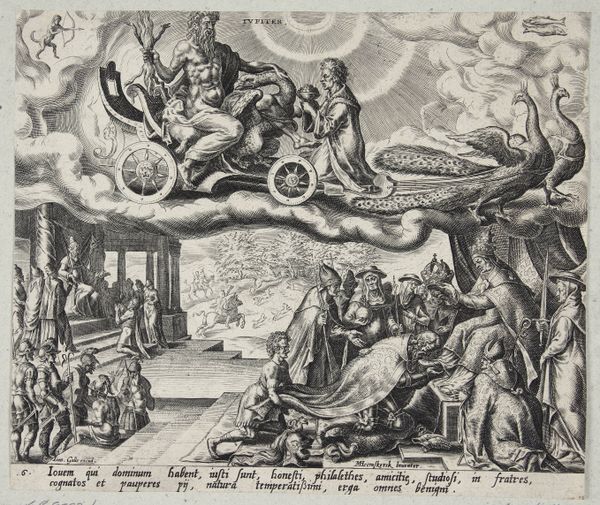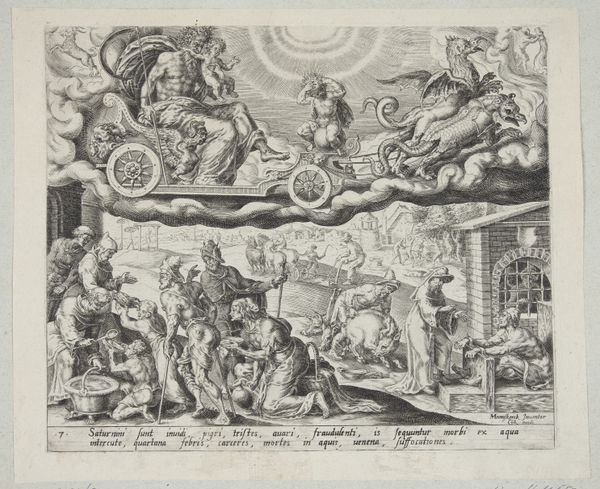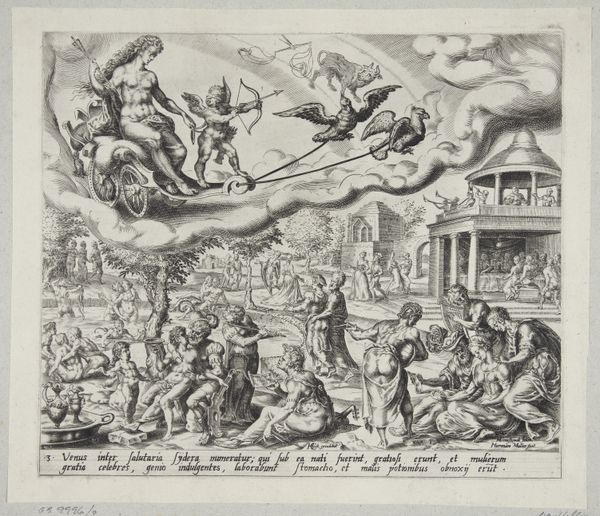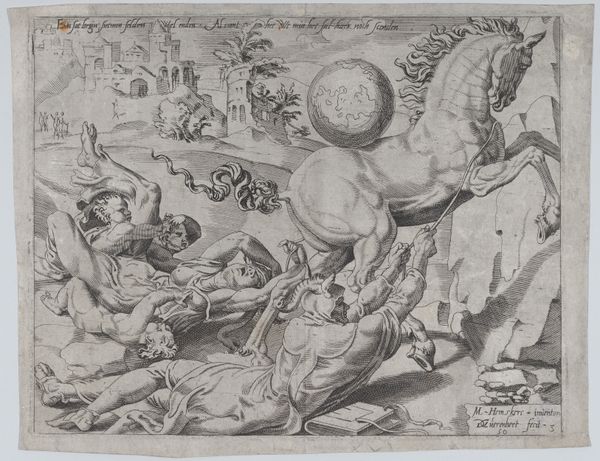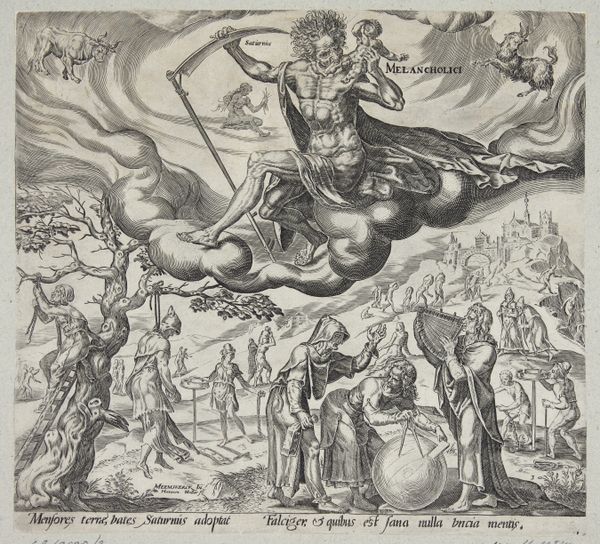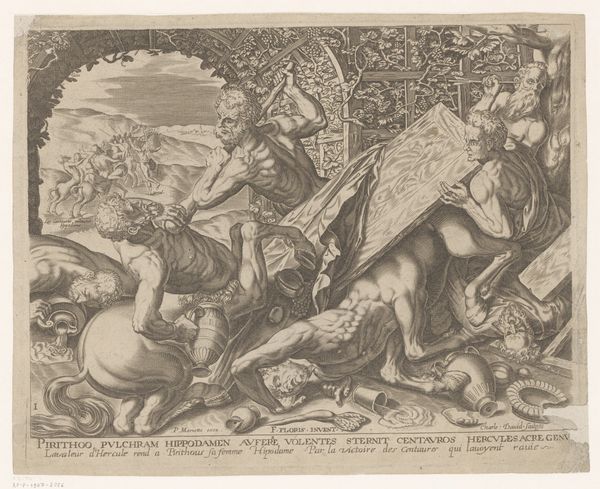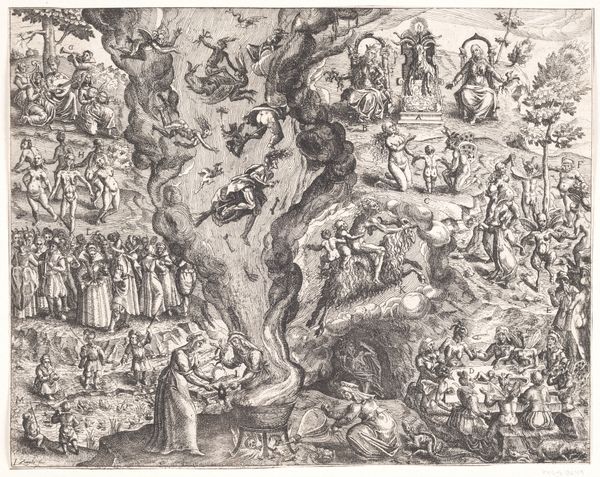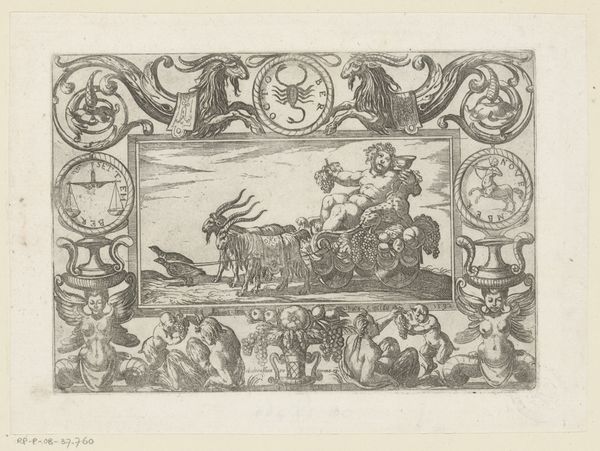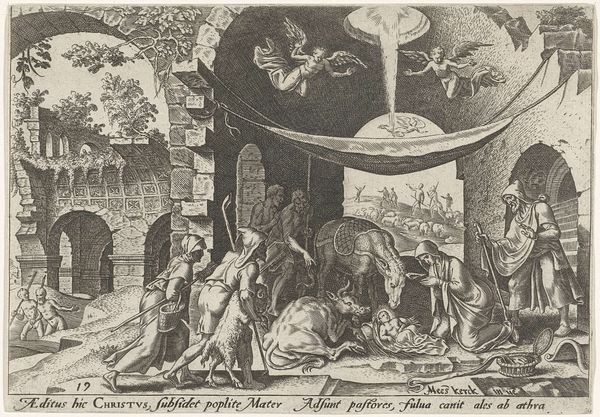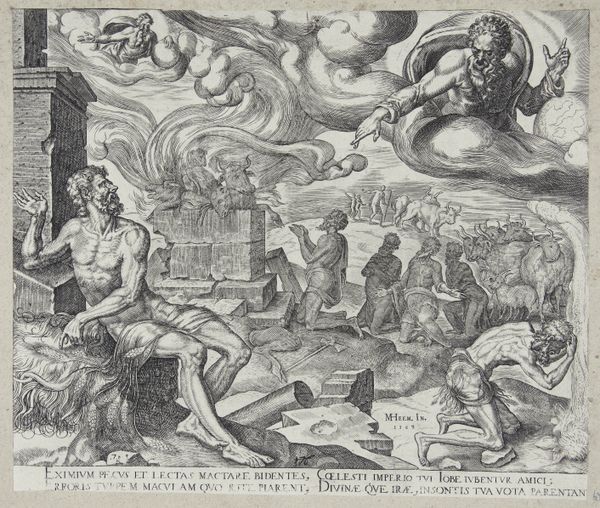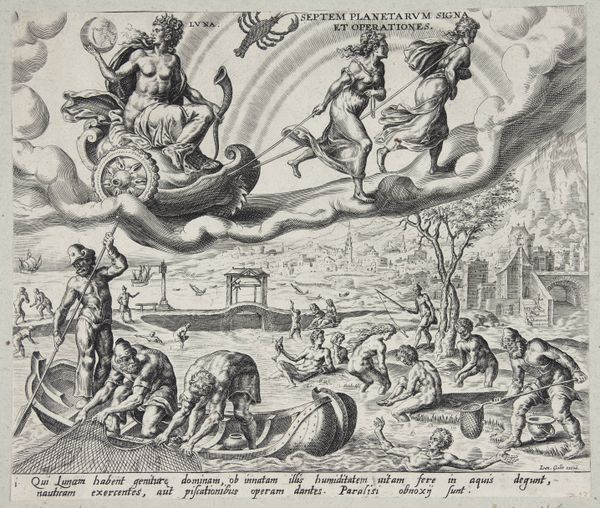
print, engraving
#
allegory
# print
#
mannerism
#
figuration
#
history-painting
#
engraving
Dimensions: 239 mm (height) x 277 mm (width) (monteringsmaal), 209 mm (height) x 245 mm (width) (plademaal)
Editor: So, this is "Jupiter," an engraving made sometime between 1566 and 1569 by Harmen Jansz. Muller. There’s almost too much to take in, all these figures swirling around. It’s quite imposing, a bit overwhelming, really. What do you see in this piece? Curator: Overwhelming is a good word! For me, it's a collision of worlds. You've got Jupiter enthroned in the heavens, complete with a peacock-pulled chariot– I imagine those are VERY bumpy rides– contrasted with earthly rulers being crowned below. The engraving is not merely illustrative, it sparks thought through the complex imagery and intricate linework. Tell me, what connections do you observe between the upper and lower registers? Editor: Well, it looks like those below are seeking Jupiter's blessing, maybe? Or at least some sort of divine legitimization. But is the connection truly beneficial, or is there a tension between them? It feels…complicated. Curator: Complicated, yes! Consider the era – the late Renaissance, a time of intense religious and political upheaval. Harmen Jansz. Muller layers these complexities visually. There's ambition, certainly, but perhaps also a critique of earthly power and its dependence on supposed divine right. It raises questions of vanity, doesn’t it? Editor: Absolutely! It’s like the artist is questioning the whole system. Now that I think about it, there is an artificiality about the whole engraving – with this intricate but manufactured design that has none of the true sublime that, say, a landscape etching of the same period could evoke. It is manufactured – so how reliable are those kings in their claim to a higher authority? Curator: Exactly! It makes one ponder who really holds the power—is it Jupiter, or those who claim to act in his name? What's great here, as a student and not necessarily as a print specialist like myself, is engaging and questioning—your intuition is as valid a tool as art historical rigor, never forget that. Editor: I will definitely remember that. Thank you, this has definitely offered me a way into reading this work, that at first, I couldn't understand!
Comments
No comments
Be the first to comment and join the conversation on the ultimate creative platform.
